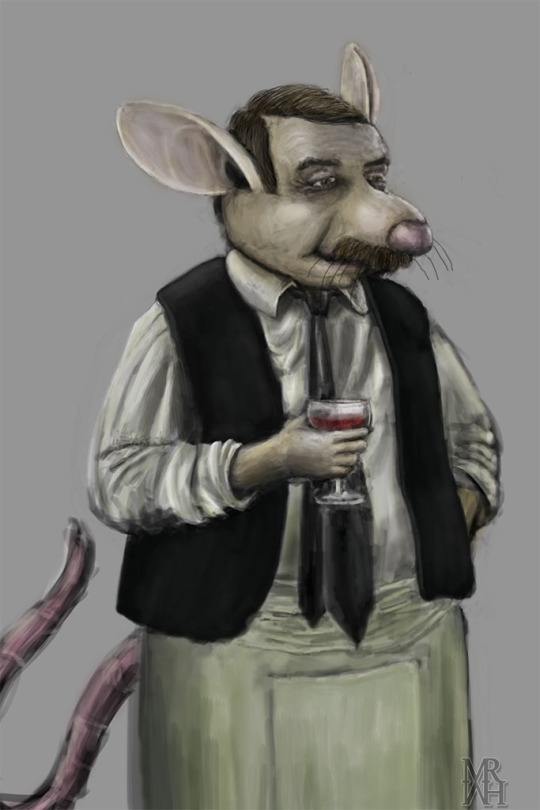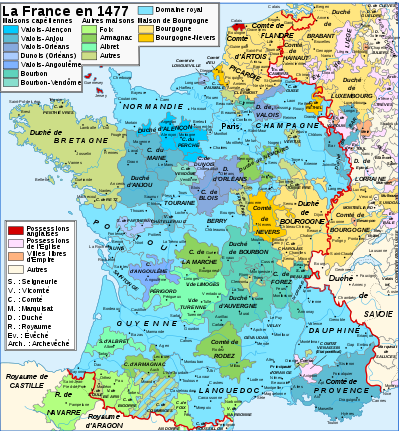#René Artois
Explore tagged Tumblr posts
Text










Working on Rene in the art style of “Les grandes grandes vacances/The Long Long Holiday”
It’s a cute French cartoon about kids in occupied France in the war
I thought since they both take place in occupied France that I would kinda do a crossover thing where I drew Rene in that art style
Tbh, I cannot watch anything set in ww2 occupied France WITHOUT thinking about Allo Allo 😂
I highly recommend that cartoon it’s on Prime btw.
I’m sure most of y’all have seen that show but I’ll include style examples anyway
#allo allo#Rene Artois#René Artois#the long long holiday#les grandes grandes vacances#crossover fanart#allo allo fanart#‘allo ‘allo#‘allo ‘allo!#ww2 art#Wwii art#brezelzeit art
59 notes
·
View notes
Text












“This type of gin is colored a very pale blue.” “I run a bar, I do know that.” “Nitroglycerin is also colored a very pale blue.” “I didn't know that. But what is the connection?” “This is nitroglycerin.”
#'allo 'allo!#'allo 'allo#allo allo#britcom#guy siner#gorden kaye#lieutenant gruber#hubert gruber#rené artois#savile row to the rescue
20 notes
·
View notes
Text
kind of cunty of rené artois to fake his death and come back as his own twin then lie about it to the faces of people he's known for ages in the middle of a war.
#👏👏👏#rene artois#rené artois#allo allo#'allo 'allo#'allo 'allo!#nightmare fandom to tag for it's like tota all over again#classic sitcoms#british sitcoms#mine
6 notes
·
View notes
Text



'Allo 'Allo Season 1, Episode 3: Savile Row To The Rescue
#achillean archives#Lieutenant hubert gruber#liteutenant gruber#René Artois#Allo Allo#'Allo 'Allo#Rene Artois#S1Ep3#Savile Row To The Rescue
27 notes
·
View notes
Text
He makes a great rat!

old art.
Rene. He's a rat. Owner of a cafe. Being pressured to help the resistance. Have to hide the British airmen under his mother in law's bed.
#I see him more as a bear and von Smallhausen is sorta canonically rat coded in#my opinion#but this works so well#allo allo#fanart#allo allo fanart#René Artois#I’m gonna draw a pic of the whole cast as animals eventually
15 notes
·
View notes
Text
Dumas gives several different answers to the question of what Madame Danglars’ maiden name was. In Chapter 27, Caderousse tells Abbé Busoni that her father was “Monsieur Servieux, the present king’s chamberlain”, but in Chapter 46, Danglars tells the Count of Monte Cristo that she was “Mademoiselle de Servières”; the lady herself gets the casting vote in Chapter 54, signing a letter “Baroness Danglars, née Hermine de Servieux”.
It doesn’t end there, however: In Chapter 67, Villefort implies that she was a guest at the celebration of his betrothal to his first wife, Renée de Saint-Méran. The descriptions of that event in Chapter 6 and Chapter 9 do not mention anybody named Servieux or Servières… but there is a Count de Salvieux, who is said to be the chamberlain of the King’s brother, the Count of Artois – that is to say, of the person who, by the time of Caderousse’s conversation with Abbé Busoni, had himself become the King. And the Count de Salvieux’s daughter is also there, as a friend of the bride-to-be.
The more I think about it, the more I like the idea that young, pretty Mlle. de Salvieux, who shows such a flattering interest in Villefort’s professional skill, is meant to be the same person as the future Madame Danglars. It adds some interesting depths to her backstory, and answers the otherwise unanswered question of how she and Villefort first met, providing a beginning to a story that otherwise only has a middle and an end.
And, knowing how it ends, how poetic that the first time we see her should be when she’s imploring Villefort for an opportunity to watch him at work at the assizes…
13 notes
·
View notes
Text
Expansion of the royal domain
The way in which the kingdom was ruled in its different provinces had always varied according to the degree that power had been permanently or temporarily devolved to apanage princes and great nobles or that representative assemblies continued to function. It is therefore axiomatic that there was no 'system of government' in the France of the Renaissance. The question is: was there a tendency for the kingdom to become more centralised? R. Bonney has wisely cautioned against the over-use in French history of the term 'centralisation', a term coined in 1794. The main distinction drawn in the early modern period, as Mousnier made clear, was that between the king's 'delegated' and 'retained' justice, the latter covering all the public affairs of the kingdom in which the crown was supreme and the former the private affairs of his subjects. No one would pretend, however, that a clear line of division was ever established between the two.
If we consider the case of the apanages and' great fiefs, for instance, the century from the reign of Louis XI is usually considered definitive in their suppression. In 1480, there were around 80 great fiefs. By 1530 around half of these still existed. The rest were in abeyance or held by members of the royal family. Within the royal house, the apanage of Orleans was reunited to the crown on the accession of Louis XII, although thereafter used periodically for the endowment of the king's younger son, permanently so after the reign of Louis XIV. The complex of territories held by the Bourbon and Bourbon-Montpensier families fell by the treason of the Constable in 1523. Burgundy (and temporarily Artois and Franche-Comté) were taken over in 1477. Among the great fiefs, the county of Comminges was united to the crown on the death of count Mathieu de Foix in 1453, the domains of the Armagnacs (such as the county of Rodez) were confiscated on the destruction of Jean V at Lectoure in 1473. They found their way by the reign of Francis I into the hands of the royal family, through the marriage of Jean V's sister to the count of Alençon. The last Alençon duke, Charles, married Francis I's sister, Marguerite of Angoulême, and Alençon's sister, Françoise, married duke Charles of Vendôme, grandfather of Henry IV. Brittany was acquired through war and marriage alliance in the 1490s, Provence and the domains of the house of Anjou after the death of king René and then of Charles d'Anjou in 1481. The archives of the Chambre des comptes of Anjou for the early 1480s give ample evidence of the king's determination to exploit his new acquisition as soon as possible.

It should not be assumed that the crown pursued a consistent determination to lay hands on all these territories and rule them directly. There was usually a more or less lengthy period of adjustment to a new status. Some apanages and territories taken over by Louis XI were absorbed into the general administration of the rest of the kingdom. This was clearly the case with Burgundy and Picardy-Artois in 1477, both of them in the area under the jurisdiction of the Parlement of Paris. Yet even here, Louis XI had to tread warily in winning over the support of the regional nobility and discontent was apt to break out until the end of the fifteenth century. On Louis's death, for instance, a rising occurred in Picardy at Bertrancourt near Doullens, with cries of 'there is no longer a king in France, long live Burgundy!' The absorption of Artois proved to be an impossible undertaking and had to be renounced in 1493.
Elsewhere, absorption of apanages that were distant from the centre of royal power left affairs locally much as they had been before. The little Pyreneen county of Comminges was governed much as it had been under its counts, with privileges confirmed by Charles VIII in 1496. Only with the work of royal commissioners in the tax-assessing process in the 1540s, the first time an outside power had actively intervened in the affairs of the local nobility, did this begin to change. Auvergne, an apanage raised to a duchy in 1360, was confirmed to the Bourbons in 1425 on condition that their whole domain became an apanage. The duchy was confiscated from the Constable in 1523 but transferred by the king to his mother in 1527 and only absorbed into the royal domain in 1531. Even after that, it formed the dower of Charles IX's queen and then part of the apanage of François d'Anjou, his brother. In the contiguous county of Forez, also confiscated in 1523, little local opposition emerged to the change of regime; although the local chambre des comptes was shortly suppressed, most local judicial officials, along with the entire administrative structure, were retained. Except for a few partisans of the Constable, it seems that there was no great upheaval. Louise de Bourbon, the Constable's sister and princess of La Roche-sur-Yon, demanded a share of the inheritance - Forez, Beaujolais and Dombes. Beaujolais and the principality of Dombes eventually went to Louise's son, Montpensier.
The county of Auvergne, enclaved in the duchy, was held by the duke of Albany in his wife's name, and was then inherited from the last of the La Tour d'Auvergne family by Catherine de Medici. Catherine brought it to the crown by her marriage with Henri II in 1533 but she continued to administer it as her own property. She left it to Charles IX's bastard, Charles de Valois, but her daughter Marguerite made good her claim to it in 1606 and it only entered the royal domain definitively when she willed it to Louis XIII.
After her marriage to Charles VIII in 1491, Brittany was administered as her own property by queen Anne, technically still duchess but in reality sharply circumscribed in her power, until her husband's death restored some of her freedom of action in 1498. Having already established friendly relations with Louis XII when he was still duke of Orleans, she was prepared to accept his offer of marriage after the annulment of his marriage to Louis Xl's daughter, Jeanne, had been agreed. The contract which accompanied the marriage in January 1499 tied the duchy to the crown provisionally on condition that it always passed to the second son of the marriage, while in the absence of issue the duchy was to revert to Anne's heirs on her own side. Anne was able to act rather more independently during her marriage to Louis XII though the conditions of the contract were not observed. On her death Brittany was inherited by her elder daughter Claude, wife of Francis I, who transmitted her rights to her son the dauphin. The queen had, however, transferred the government of the duchy to her husband in 1515 and he continued to rule it in the name of his son François on Claude's death, entitling acts as 'legitime administrateur et usufructuaire' of his son's property. When the dauphin's majority in 1532 brought the question of the imminent personal union of the duchy to the kingdom to the foreground, it was arranged for the Breton estates to 'request' full union with France but on terms which guaranteed Breton privileges and maintained the principle that the dauphin would be duke of Brittany. Only in 1536, on the death of the dauphin, was the union with the kingdom complete and no more dukes were crowned at Rennes. What had been done was the annulment of the Breton succession law, which included females, in favour of the French royal succession law. Late in 1539, it was decided that the new dauphin Henri would have the government of Brittany 'to govern as he pleases', though the documents were delayed by the king's illness. A 'Declaration' transferring Brittany to Henri was drawn up in 1540. In practice, the government of the duchy seems not to have been much changed.
The lands of the house of France-Anjou posed a complex problem. René of Anjou, titular king of Jerusalem, Sicily, Aragon and Naples, was count of Provence in his own right, of Maine and Anjou as apanagiste and Guise by succession. As early as 1478, Louis was scheming to ensure that king René, who had no surviving son, did not leave his territories of Anjou, Provence and Bar to his grandson, René II of Lorraine, warning the general of Languedoc that his region would be 'destroyed' if Provence fell into other hands. On the 'good' king's death in 1480, most of his domains passed to his cousin Charles IV d'Anjou, count of Maine, who died childless in 1481, when Maine and Anjou reverted to the crown, thereafter to be granted out to members of the royal family such as Louise of Savoy. At the same time Provence was acquired by Louis XI by Charles IV's will and the county of Guise was disputed between the houses of Armagnac-Nemours, Lorraine (heirs of René I of Anjou and successors as titular kings of Jerusalem and Sicily) and Pierre de Rohan, marshal de Gié. From 1481, however, the king ruled in Provence as 'count of Provence and Forcalquier'. The lord of Soliès, Palamède de Forbin, who had persuaded Charles d'Anjou to leave the county to the king, was rewarded with the post of governor. The major change came in 1535 with the edicts of Joinville and Is-sur-Tille on the government of Provence, limiting the scope of the old institutions of the Estates and the Sénéchal and increasing that of the Parlement of Aix in justice and of the royal governor in administration. Curiously, Francis I was reported as having said that he felt an obligation to 'ceux de Guise', the house of Lorraine in France, since Louis XI had despoiled them of their inheritance of Provence and Anjou.
The major surviving complex of apanage lands by the middle of the sixteenth century was that held by Antoine de Bourbon, now first prince of the blood and next in line to the throne after the immediate royal family, and his wife Jeanne d'Albret. These involved a group of territories held by different tenures. The Albret inheritance brought the titular kingship of Navarre with a small fragment of the ancient kingdom of Navarre north of the Pyrénées that was held in sovereignty. In the counties of Foix, Albret and Béarn, the family held effective sway under only the most distant royal sovereignty, though Louis XI saw fit to pose as the protector of the young François-Phébus in 1472. In 1476, he sought to revise local tariffs against Albret interests and in 1480 attempts to levy a taille for the gendarmerie there stirred up a rebellion. In western France, the duchy of Vendôme, erected as late as 1515 to detach it from dependence on the duchy of Anjou, was held as an apanage under rather closer royal supervision. In the north, the complex of lands administered from La Fère-sur-Oise and centring the county of Marle was held directly of the king or of the Habsburg ruler of the Netherlands, rendering the family, to some, unreliable. Practical power stemmed from the holding of the governorships of Picardy and of Guyenne by the Bourbons and Henri d'Albret.
Other independent territories persisted, such as the vicomté of Turenne, where the vicomte (of the La Tour d'Auvergne family) ruled with regalian rights until the eighteenth century, could raise taxes, coin money, make war and render justice as a limited monarch in conjunction with very active local estates.
David Potter - A History of France, 1460-1560- The Emergence of a Nation State
#xv#xvi#david potter#a history of france 1460 1560: the emergence of a nation state#louis xi#louis xii#charles iii de bourbon#mathieu de foix#jean v d'armagnac#françois i#charles iv d'alençon#marguerite d'angoulême#rené d'anjou#charles viii#charles ix#élisabeth d'autriche#louise de bourbon#gilbert de montpensier#catherine de medici#house of la tour d'auvergne#charles de valois#louis xiii#anne de bretagne#jeanne de france#claude de france#charles iv d'anjou#louise de savoie#house of guise#capetian house of bourbon#antoine de bourbon
4 notes
·
View notes
Text

She does have your eyes.....

You said you'd be on the pill and I shouldn't use a condom.
🤣😂😝😛😅
4 notes
·
View notes
Text
A René Artois lookalike is found set up like a scarecrow. Suspicion falls on Acock Green’s gourami appreciation society, confused that badly-written antivirus software might threaten Causton’s chances at winning the Village of the Year award.

The Midsomer Murders Plot Generator
"The local viscount is found contemplating their mortality in a literal sense. Suspicion falls on Little Ox Eye’s real ale appreciation society, worried that an alarming decline of peat bogs might threaten the winery."
81 notes
·
View notes
Text

Officer Crabtree + René Artois
4 notes
·
View notes
Text
Hey is anyone a fan of allo allo? If so and you want a discord to chill with other fans, here is the link!!
18 notes
·
View notes
Text

Ya gorl got her ‘Allo ‘Allo themed phone case in the mail today
#allo allo#‘allo ‘allo#‘allo ‘allo!#René artois#Yvette carte-blanche#Edith artois#Hubert Gruber#Lieutenant Gruber#Helga geerhart#private Helga geerhart#Herr flick#Herr Otto flick#officer Crabtree
4 notes
·
View notes
Text




Happy Birthday, dear Colonel.
#0_0#'allo 'allo!#'allo 'allo#allo allo#britcom#gorden kaye#guy siner#richard marner#vicki michelle#francesca gonshaw#rené artois#hubert gruber#lieutenant gruber#colonel von strohm#yvette carte-blanche#maria recamier#reds nick colonel
15 notes
·
View notes
Photo

René Artois: Man of a thousand faces, every one the same.
2 notes
·
View notes
Text








'Allo 'Allo Season 1, Episode 3: Savile Row To The Rescue
#achillean archives#liteutenant gruber#Lieutenant Hubert Gruber#'Allo 'Allo#René Artois#Allo Allo#S1Ep3#Savile Row To The Rescue
8 notes
·
View notes
Photo


Thank you, Gordon Kaye (April 7, 1941 - January 23, 2017), for creating an unforgettable character of René Artois for us <3
68 notes
·
View notes